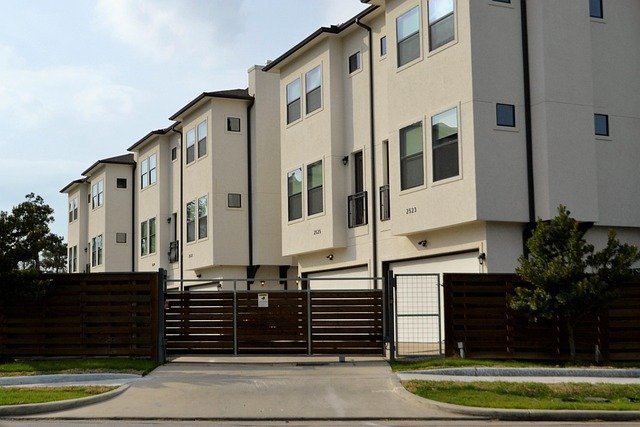What Retirees Should Know About Retirement Village Living and Costs
Transitioning into retirement living is a significant decision that requires careful consideration of various factors, including lifestyle preferences, healthcare needs, and financial planning. Retirement villages offer a popular housing option for seniors seeking independence while having access to supportive services and a community of peers. However, understanding the complex pricing structures, included amenities, and contractual obligations is essential before making this important life choice. This comprehensive guide explores what retirees should know about retirement village living and the associated costs to help make an informed decision.

How Retirement Village Pricing Works
Retirement village costs typically involve multiple components that can vary significantly between providers and locations. The primary financial models include:
-
Entry Fee/Buy-in Model: This upfront payment grants you the right to occupy a unit within the retirement community. Depending on the contract type, a portion of this fee may be refundable when you leave or sell the unit. Entry fees can range from $100,000 to over $1 million depending on location, unit size, and community prestige.
-
Monthly Service Fees: These ongoing charges cover community maintenance, amenities, and basic services. Monthly fees typically range from $2,000 to $5,000 and may increase annually.
-
Care Costs: If additional healthcare services become necessary, these are often charged separately from the monthly service fee. Some communities offer all-inclusive pricing while others use a fee-for-service approach.
The financial structure also varies by ownership type. You might encounter:
-
Rental Models: No large upfront payment, but higher monthly fees
-
Equity/Ownership Models: Purchase of the unit with traditional real estate ownership
-
Life Lease Arrangements: Right to occupy but not true ownership
-
Continuing Care Retirement Communities (CCRCs): Tiered pricing based on care level
Key Features and Services Included in Most Retirement Communities
Most retirement villages offer a combination of housing options, amenities, and services designed to enhance residents’ quality of life and provide necessary support as they age. Common features include:
Living Accommodations:
-
Independent living units (apartments, cottages, or townhomes)
-
Assisted living facilities
-
Memory care units
-
Skilled nursing facilities (in continuing care communities)
Core Services:
-
Property maintenance and landscaping
-
Security systems and personnel
-
Housekeeping (full or partial)
-
Transportation services
-
Meal plans (typically 1-3 meals daily)
-
Utilities (often with some limitations)
Lifestyle Amenities:
-
Fitness centers and swimming pools
-
Social activities and educational programs
-
Community centers and dining facilities
-
Gardens and walking paths
-
Hobby rooms and creative spaces
Health and Wellness Services:
-
Emergency call systems
-
Wellness programs
-
Medication management
-
Physical therapy services
-
Coordination with healthcare providers
The extent of services included in the base monthly fee versus those available at additional cost varies widely among communities, making it crucial to understand exactly what you’re paying for.
What to Consider When Choosing a Retirement Village
Selecting the right retirement community extends beyond financial considerations. Key factors to evaluate include:
Location and Accessibility:
-
Proximity to family and friends
-
Access to shopping, healthcare, and cultural activities
-
Climate preferences
-
Transportation options
Community Culture and Social Environment:
-
Demographic makeup of residents
-
Activity calendar and social opportunities
-
Religious or cultural affiliations
-
Pet policies
Healthcare Continuum:
-
Availability of different care levels
-
Transition policies between care levels
-
Healthcare staff qualifications
-
Coordination with external medical providers
Contract Terms and Financial Stability:
-
Type of residency agreement offered
-
Fee increase history and policies
-
Financial health of the management company
-
Refund policies and estate implications
Quality Indicators:
-
Staff-to-resident ratios
-
Resident satisfaction surveys
-
Accreditations and ratings
-
Longevity of staff and management
Future Planning:
-
Community expansion plans
-
Technology integration
-
Adaptability to changing needs
Comparing Retirement Village Options: Cost Analysis
When evaluating retirement communities, comparing their cost structures provides valuable insights. The table below illustrates typical pricing models across different types of retirement living arrangements:
| Retirement Living Type | Entry Fee Range | Monthly Fee Range | What’s Typically Included |
|---|---|---|---|
| Independent Living Communities | $100,000 - $500,000 | $1,500 - $3,500 | Housing, maintenance, activities, some meals, transportation |
| Assisted Living Communities | $80,000 - $250,000 | $3,000 - $6,000 | Above plus personal care assistance, medication management |
| Continuing Care Retirement Communities | $150,000 - $1,000,000+ | $2,500 - $7,000 | Guaranteed access to multiple care levels, comprehensive services |
| Life Plan Communities | $200,000 - $1,200,000 | $3,000 - $7,500 | All-inclusive services with healthcare needs coverage |
| Rental Retirement Communities | $0 (No entry fee) | $3,000 - $8,000 | All services included in higher monthly fee |
Prices, rates, or cost estimates mentioned in this article are based on the latest available information but may change over time. Independent research is advised before making financial decisions.
Understanding Contract Types and Their Financial Implications
Retirement communities typically offer several contract types, each with different financial structures and implications:
Type A (Life Care): The most comprehensive and expensive option, providing unlimited assisted living and nursing care with little or no increase to the monthly fee when higher care levels are needed.
Type B (Modified Plan): Provides a set amount of healthcare services included in the monthly fee, with additional care available at discounted rates.
Type C (Fee-for-Service): Lower initial fees but charges market rates for healthcare services when needed, potentially resulting in significant cost increases if health deteriorates.
Rental Agreements: No entry fee but higher monthly costs with no equity investment; typically month-to-month or annual leases without long-term healthcare guarantees.
Equity Models: Similar to traditional real estate purchases where you own your unit and pay monthly maintenance fees, but healthcare services are not typically included.
Understanding these contract types is crucial for accurately projecting long-term costs and ensuring the retirement village aligns with your financial plan and healthcare needs.
Conclusion
Retirement village living offers many seniors a balanced solution that combines independence with community support and access to care as needs change. The decision involves careful consideration of financial structures, service offerings, community culture, and personal preferences. By thoroughly researching options, understanding contract terms, and realistically assessing current and future needs, retirees can find a retirement community that enhances their quality of life while providing necessary support through the aging process.




